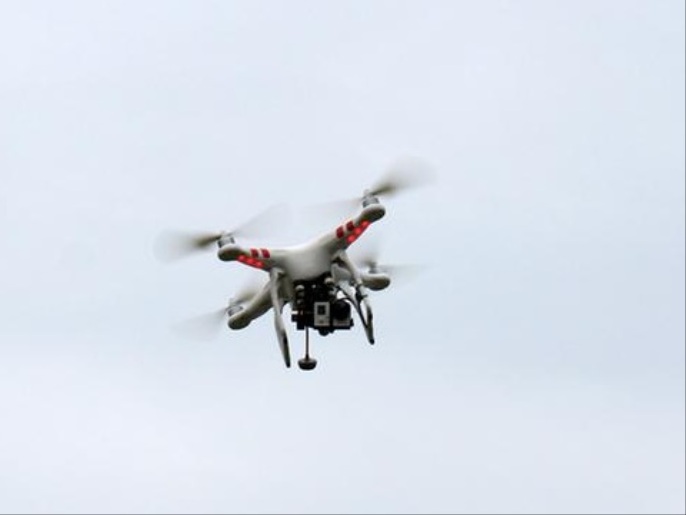The American magazine Newsweek published a report on the possibility of attacks similar to the September 11 attacks by drones, saying that the marches are not tomorrow's weapons of mass destruction, but rather the weapons of today, and the technology required to design them has become cheaper, smarter and easily accessible.
And she explained in a
report
written by Tom O'Connor and Navid Jamali that a US military official - who requested anonymity - drew up a possible scenario involving small aircraft referred to as unmanned aerial systems (UAS), unmanned aircraft systems, or simply "drones", to wonder : "What can you do if you have two small drones and you head into a crowded stadium. It could cause a lot of damage and it's a perfectly possible scenario."
Already started
The American official pointed out that the era of tactical warfare by drones had already begun.
Shortly after the events of September 11, 2001, the United States became the first country to use drones as an actual weapon, and to equip them with precision missiles, thus becoming an essential element in the "war on terror".
He also referred to the attacks on the Iraqi prime minister this week and the Venezuelan president in August 2018, and their use in Iraq and Syria against US forces, and in Azerbaijan.
Very easy tool
The report's authors quoted an Israeli security official as saying, "This tool is very easy today, and the drones are small. You order it and you will get what looks like a precision-guided missile."
He added that even with their current destructive capabilities, the munitions associated with these aircraft are still relatively in their infancy, but their capabilities are growing at a remarkable speed, and they have become more accurate in their navigation capabilities, "I think what we will see is that the amount of explosives will increase."
An Israeli security official: The munitions of these aircraft are still in their infancy, but they are growing at an appreciable speed (Deutsche Welle)
The Israeli security official went on to say that smaller commercial drone systems outperform conventional aircraft with another unique advantage: they do not need a launch pad, which makes them more difficult to detect.
And when used in larger numbers - known as a swarm - they are also more difficult to intercept.
He added that the world is witnessing another escalation of "terrorism." After America's withdrawal from Afghanistan, "terrorist" activities increased, and the type of support provided by some organizations that feel they are stronger and perhaps more courageous, and "this drone tool can certainly be something we may see increased use." .
horrific scenarios
The report attributed to an Australian researcher who worked as a US national security adviser, Zachary Kallinborn, saying that the increasing technology of drones is increasingly allowing them to fly independently or in collective swarms, which increases the potential damage significantly.
Imagine a "terrorist" air strike, or a group of drones dropping bombs on a concert or crowd at a football stadium.
Even more damaging, Clinburn warned, the attackers could greatly multiply the number of casualties through the use of weapons of mass destruction.
He said that the drones would be highly effective delivery systems for chemical, biological, radiological and nuclear weapons, and could - for example - spray the deadly element over a crowded area.
Cullenborn went on to say that he is also very concerned about drone attacks on aircraft, because aircraft engines and wings are not designed to survive drone strikes.
But he pointed out that the identity of the attacker is very important, because the great determinant of the worst-case scenario is the ability to obtain the chemical, biological, radiological or nuclear agent.
Historically, "terrorists" have had great difficulty obtaining these things, but nations' armies have the resources and technology to create huge swarms that can rival the damage of conventional weapons of mass destruction, including small nuclear weapons.
remote identification
With regard to defending against drone attacks, the US military official said that one of the ways in which the US Federal Aviation Administration seeks to improve the authorities' ability to identify potential problems posed by drone systems is to impose "remote identification", through which it will be asked to Drones provide basic information such as identity, altitude, and current location, as well as the operating location and point of take-off.
An FAA spokesperson told the magazine that the "remote identification" requirements for all UAS operators, when combined with their existing registration requirements, would enable more effective detection and identification, and this would also help enforce the law on linking an unauthorized drone to its operator. It will also help determine whether the unmanned aircraft poses a real threat that must be mitigated, or whether the aircraft erred and strayed away from the person operating it, but it is not intended to cause damage or damage.
The report stated that the purchase of drones today is completely unrestricted, as they are mainly games, and the recording will solve some of the problem, but the drone's drone will also be invisible and difficult to catch in the attack.
In addition to the kinetic threat, one of the experts who spoke to the magazine warned of potential cyber attacks using drone systems.
He revealed that they had received reports that the container ship Ever Given, which closed the Suez Canal and halted a lot of sea traffic this year, had been hacked by a drone, when a ransom request was rejected.
Other possible solutions
The report also presents potential solutions, including a range of detection capabilities such as radio frequency, radar, sound, optics and multi-sensor systems.
It also lists neutral assets including radio frequency jammers, GPS jammers, cyber tactics, directed energy attacks, anti-drone aircraft and kinetic systems capable of blowing up drones in the sky.
The report ends with a warning that governments and their law enforcement and security agencies must now begin creating systems to defend against drone attacks.

